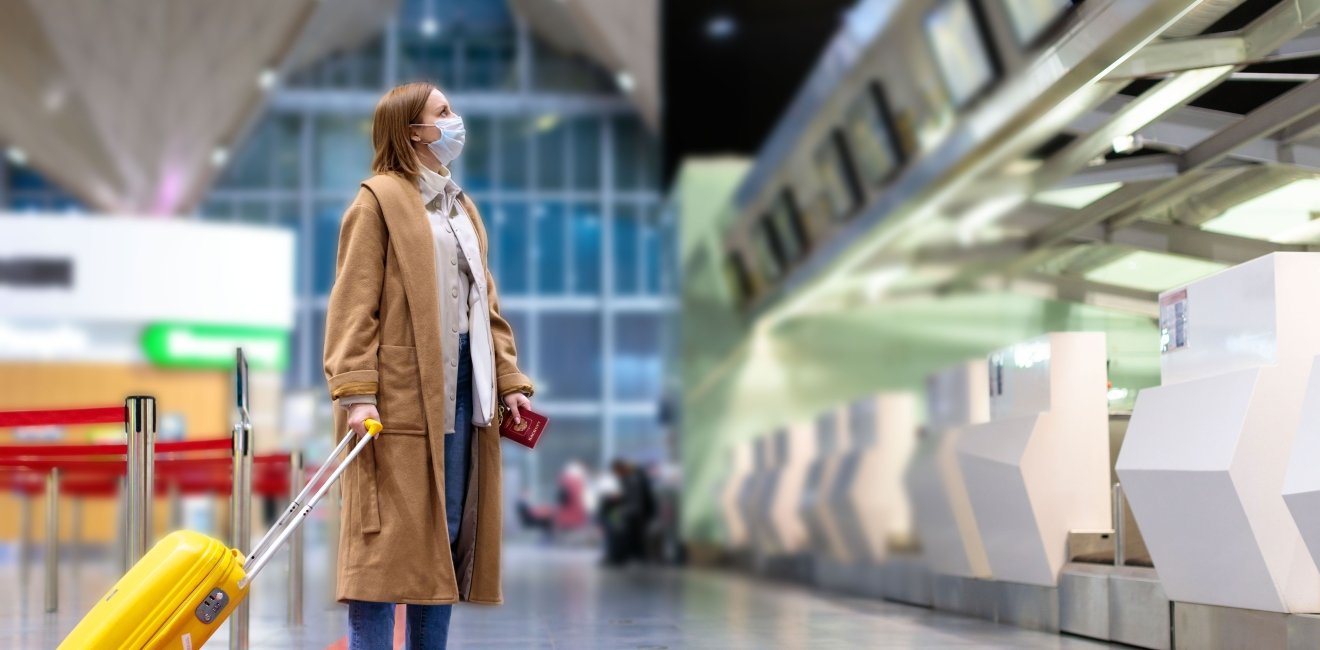
A blog of the Science and Technology Innovation Program
"Such [health] measures shall not be more restrictive of international traffic and not more invasive or intrusive to persons than reasonably available alternatives that would achieve the appropriate level of health protection." International Health Regulations Article 43.1
On November 8, 2021, the White House will lift travel bans on certain vaccinated foreign travelers and change restrictions broadly. Highlights include:
- Travelers with non-U.S. citizenship from 33 previously restricted countries may now travel to the U.S. with proof of approved vaccination and proper testing.
- For unvaccinated U.S. citizens, travelers must now be tested one day in advance of their flight and three days in advance for vaccinated U.S. and approved non-U.S. travelers.
- Children under 18 are not required to be vaccinated and must adhere to the three-day testing schedule like vaccinated travelers.
- Those from countries with low vaccination rates may also travel to the U.S. but are subject to potentially getting vaccinated if their stay is for long enough and must submit to testing much like the other travelers.
The full list of changes was posted by the Centers for Disease Control and Prevention (CDC). The CDC has worked with airlines to usher along this process and even decide which of the globally available vaccines count as viable options to permit travel into the U.S.
As the holiday season begins, this travel allowance may be seen as a needed and largely unremarkable move since many other countries have allowed international travelers earlier and the U.S. was seen as one of the strongest holdouts. With international travel inching back to its pre-pandemic capabilities, a looming question persists—did we do any of this right?
Travel and Global Health Norms
Before COVID-19 had become a domestic issue, in the minds of U.S. citizens, the global health security community and global health law community had to walk a tenuous tightrope. A tightrope that was strung for them by the past norms and regulations created in the wake of SARS, influenza, Ebola, and others. A tightrope many knew might not hold up under the pressure of a novel coronavirus that spread through then-unknown means and was contracted by an unquantifiable number of people because of testing failures and the fickle nature of asymptomatic spread. A tightrope set up by the World Health Organization (WHO) at the World Health Assembly (WHA)—titled the International Health Regulations or as it is commonly referred to as, the IHR.
Early on, these experts consistently warned against the implementation of travel restrictions citing Article 43 of the IHR which details the process for instituting them while implicitly stating how dire the situation would have to be to get approval. They cited its warning that travel and trade restrictions could decimate economies and prevent the flow of medical goods and professionals from reaching countries that needed them the most. Not to mention, closing travel creates human rights concerns that organizations like the WHO fight to combat. However, the pandemic has also been a lesson in uncertainty and changing norms—something that these same scholars, experts, and professionals have been more than willing to admit.
While travel and trade restrictions did cause chaos, there is little doubt that it at least bought countries time to prepare for COVID-19 before what was inevitable with or without the restrictions—community spread. Without diving too deeply into the U.S.’s response (because it has been covered extensively, e.g. here and here) that time bought was effectively time wasted. Time wasted because of executive inaction and an unwillingness to do the actual work required.
How COVID-19 Changed Everything
With new knowledge and the benefit of hindsight, experts must assess the utility and the policy tied to manipulating travel to fight disease. Travel restrictions still are extreme and should not be a new standard—but the mounting evidence indicates there may be a future for them beyond the previous policy of: no travel restrictions, full stop. There is a strict protocol for justifying these restrictions through Article 43, but the protocol was largely ignored by countries, and the WHO had already expressed disapproval of travel restrictions before countries decided to close borders.
COVID-19 tested and broke down good-faith policies the WHO and member states hoped could fight disease spread and maintain, as the IHR puts it “dignity, human rights and fundamental freedoms of persons.” These policies did not hold up in the face of a pandemic that required true whole-of-earth cooperation—a type of cooperation that had not even been displayed during past pandemics and epidemics of significantly smaller scales.
As Article 43 stands, the U.S.’s newest move to lift restrictions with the added rules requiring vaccinations, testing, contact tracing information, and others more closely aligns with “reasonably available alternatives that would achieve the appropriate level of health protection.” But this comes after months and months of overriding global health dogma and law.
What Comes Next
Later this November, hindsight will hopefully become foresight as a historic special session of the World Health Assembly (WHA) is set to take place. The Panel for a Global Public Health Convention (GPHC), a group of elite global health experts, and other groups are poised to use this special session to push for a pandemic treaty. This treaty per the GPHC’s website, “must include the structure for the governance system, functions of inspectorate, incentives/disincentives and sanctions, and transparency requirements.” In other words, it must create an agreement with an updated understanding of pandemic preparation and, for lack of a better term, teeth. Most of all, one that the world (or at least a large majority of the world) must sign onto.
This special session will set the stage for the future of international cooperation around new and emerging infectious diseases. A pandemic treaty would attempt to rectify many of the challenges that stood in the way of containing COVID-19, like rules about PPE manufacturing, data sharing between countries, global biosafety and biosecurity monitoring, and hopefully more nuanced travel guidance.
While travel will resume and the “lessons learned” meetings begin in full swing, the split-screen offers a confusing backdrop. It will take place while a large majority of the world is unvaccinated and COVID-19 is still replicating and mutating. This is not to say travel shouldn't resume or this meeting is premature—quite the opposite. We have reached a point in the pandemic as Sarah Zhang writes in the Atlantic, “We will never get the risk of COVID-19 down to absolute zero, and we need to define a level of risk we can live with.”
The world is in a wholly uncertain place where we have to start making repairs to the roof for the next storm while the basement and first floor are still flooding. What this means for the future of pandemic agreements and the ability for the WHO to exert more authority over global order is still up in the air but two things are for sure:
We cannot do it like this again.
There will be an again.
Author


Science and Technology Innovation Program
The Science and Technology Innovation Program (STIP) serves as the bridge between technologists, policymakers, industry, and global stakeholders. Read more





